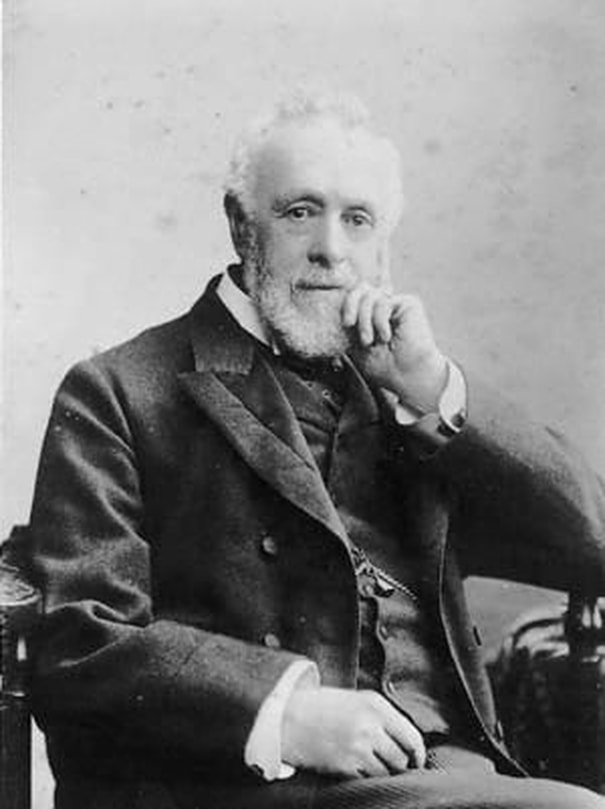Sir Henry Doulton (1820–1897), pottery manufacturer, was born on 25 July 1820 at Vauxhall Walk, London, the second of the eight children of John Doulton (1793–1873), pottery manufacturer, and his wife, Jane Duneau, a widow from Bridgnorth in Shropshire. His father had become a partner in the Vauxhall Walk pottery in 1815, establishing the Doulton name in the industry with functional brown stoneware products. Henry spent two years at University College School in Gower Street, London, where his love of literature was fostered. John Doulton fully expected the most bookish of his sons to take to the cloth or the bar when he left school in 1835 but instead Henry expressed his desire to follow his elder brother, John junior, into the pottery business. Four of Henry's brothers also joined the company, but Frederick Doulton (1824–1872) became MP for Lambeth in 1862 and remained so for six years.
After a brief apprenticeship, Henry Doulton had learned enough by 1846 to leave home and initiate and control his own branch of the business, making ceramic pipes for the sanitary market. It was the first factory to provide such products, meeting the rising demand for effective sanitation. In 1849 Doulton married Sarah, daughter of John L. Kennaby. They settled at 7 Stockwell Villas, Lambeth, where they had three children: Sarah Lilian, Henry Lewis, and Katherine.
At the Paris Exhibition of 1867 Doulton presented the first examples of art pottery to be made by the company. Ten years previously John Sparkes, principal of the Lambeth School of Art, had approached Doulton with the idea of producing such ware but while the business of functional pottery was proving so successful there had seemed no need to add any new products. But Sparkes had not been dissuaded and, with the help of Edward Cresy, an engineer and lifelong friend of Henry Doulton, he eventually convinced him to experiment with purely artistic designs. The production of art ware had been fraught with technical problems and it was not until 1870 that they began to be resolved. John Sparkes had already introduced one student of the art school to Doulton, namely the sculptor George Tinworth, who was immediately employed for his modelling skills. Other artists like Hannah Barlow followed, and by 1872 a great variety of work was being produced. These early examples prompted Doulton to enlist a batch of Sparkes's students to decorate his products, providing them with studio facilities and blank pots of soft clay to work on. The resulting richly coloured salt-glazed stoneware with a range of decorative motifs was so distinctive of the company that it became known as Doulton Ware.
In 1877 Doulton was approached by Shadford Pinder, a potter from Burslem, Stoke-on-Trent, with a proposition to become a partner in the firm of Pinder, Bourne & Co. for an outlay of £12,000. This he agreed to, but the money was unwisely spent and differences of opinion caused such a rift between the two concerns that only arbitration resolved the matter. Indeed Pinder retired from the business and in 1882 the name changed to Doulton & Co., Burslem. It was John Slater, art director at Pinder Bourne, who, after travelling among the European potteries, convinced Doulton to produce china as well as earthenware. Again the marriage of art and industry facilitated some of the finest hand-painted china of the time with artists Percy Curnock and David Dewsberry among others. Such was the success of Doulton's efforts to create a vast array of art wares as well as functional designs at Lambeth and Burslem that in 1885 the Society of Arts, of which he had been a member since 1851 and later served as vice-president (1890–94), awarded him the Albert medal, which was presented by the prince of Wales (later King Edward VII). In 1887 Doulton was knighted by Queen Victoria at Osborne House. A year after his knighthood, in October 1888, Doulton's wife died and after a succession of highly renowned exhibitions Doulton spent most of his remaining years at Woolpit Farm, his home in Ewhurst, Surrey. He died at his London residence, 10 Queen's Gate Gardens, on 17 November 1897 and was buried on 22 November at Norwood cemetery.
Alexander James Clements.
(Photo by Vandyk-private collection / National Portrait Gallery)

